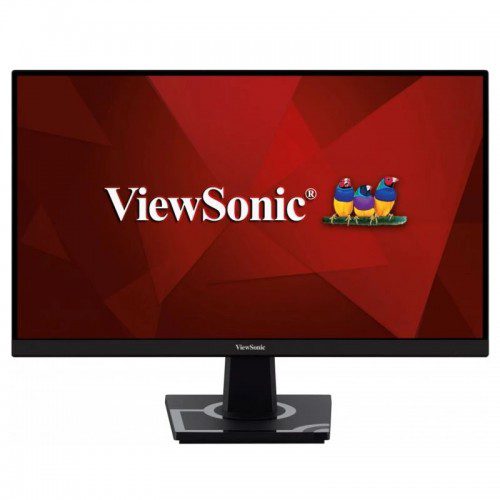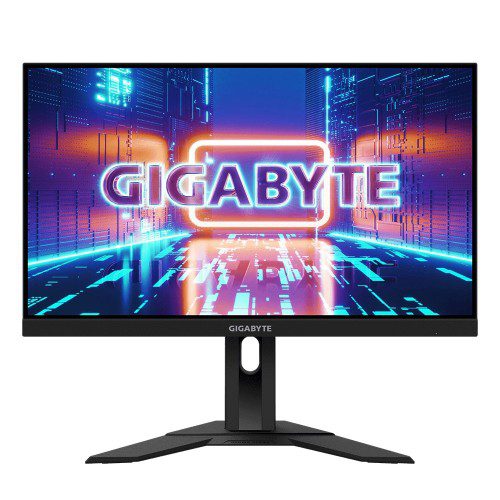Want to take your gaming to the next level? Upgrade to a gaming monitor! With high refresh rates, low response times, and stunning resolutions, gaming monitors deliver an immersive and responsive gaming experience. See every detail and react faster than ever before with a monitor designed specifically for gaming. Plus, with features like HDR and adaptive sync technologies, our gaming monitors provide the ultimate in visual clarity and smoothness. Don’t settle for a subpar display – upgrade to a gaming monitor and bring your games to life like never before!
-
Product on sale
 LG 27UN880 27 Inch UltraFine 4K UHD IPS Ergo Professional Monitor৳ 70,499
LG 27UN880 27 Inch UltraFine 4K UHD IPS Ergo Professional Monitor৳ 70,499 -
Product on sale
 LG 32UN650-W 31.5″ UHD 4K HDR IPS Monitor৳ 65,999
LG 32UN650-W 31.5″ UHD 4K HDR IPS Monitor৳ 65,999 -
Product on sale
 HP U28 G3 28″ 4K HDR Monitor৳ 56,500
HP U28 G3 28″ 4K HDR Monitor৳ 56,500 -
Product on sale
 GameMax GMX27F4KWU 27″ 4K UHD Gaming Monitor৳ 40,500
GameMax GMX27F4KWU 27″ 4K UHD Gaming Monitor৳ 40,500 -
Product on sale
 LG 27QN600-B 27 inch FreeSync QHD 75Hz IPS Monitor৳ 37,000
LG 27QN600-B 27 inch FreeSync QHD 75Hz IPS Monitor৳ 37,000 -
Product on sale
 LG UltraGear 27GN60R 27″ FHD 144Hz IPS Gaming Monitor৳ 36,000
LG UltraGear 27GN60R 27″ FHD 144Hz IPS Gaming Monitor৳ 36,000 -
Product on sale
 MSI G2412 23.8″ 170Hz FHD IPS 1ms FreeSync Premium Gaming Monitor৳ 24,700
MSI G2412 23.8″ 170Hz FHD IPS 1ms FreeSync Premium Gaming Monitor৳ 24,700 -
Product on sale
 ViewSonic VX2405-P-MHD 24 inch 144Hz Full HD IPS Gaming Monitor৳ 24,500
ViewSonic VX2405-P-MHD 24 inch 144Hz Full HD IPS Gaming Monitor৳ 24,500 -
Product on sale
 MSI Optix G24C4 23.6 Inch FHD Curved LED Gaming Monitor With 144Hz Refresh Rate৳ 24,199
MSI Optix G24C4 23.6 Inch FHD Curved LED Gaming Monitor With 144Hz Refresh Rate৳ 24,199 -
Product on sale
 GIGABYTE G24F 23.8″ 170Hz Full HD IPS Gaming Monitor৳ 23,799
GIGABYTE G24F 23.8″ 170Hz Full HD IPS Gaming Monitor৳ 23,799 -
Product on sale
 HP X24ih 24” 144Hz FreeSync IPS Full HD Gaming Monitor৳ 22,499
HP X24ih 24” 144Hz FreeSync IPS Full HD Gaming Monitor৳ 22,499 -
Product on sale
 MSI Optix G243 23.8″ 165Hz FHD Gaming Monitor৳ 22,200
MSI Optix G243 23.8″ 165Hz FHD Gaming Monitor৳ 22,200 -
Product on sale
 MSI Optix G241V E2 24″ FHD FreeSync IPS Esports Gaming Monitor৳ 19,000
MSI Optix G241V E2 24″ FHD FreeSync IPS Esports Gaming Monitor৳ 19,000 -
Product on sale
 ASUS BE229QLBH 21.5″ Full HD IPS Business Monitor৳ 15,900
ASUS BE229QLBH 21.5″ Full HD IPS Business Monitor৳ 15,900
Choosing the Best Gaming Monitor for You
Gaming monitors are essential for every gamer, whether you’re a professional or a casual player. The monitor plays a crucial role in determining your gaming experience, from the resolution and refresh rate to the response time and panel technology.
Display Size:
The size of your gaming monitor is important as it will impact your gaming experience. The larger the monitor, the more immersive your gaming experience will be. However, a larger monitor can be costly and requires more desk space. The ideal display size should be at least 24 inches, but a 27-inch monitor is more common and offers a good balance between screen size and cost.
Resolution:
The resolution of your gaming monitor will impact the clarity and sharpness of your gaming visuals. The higher the resolution, the more detailed and clear your game will appear. A 1080p resolution is the minimum for most gamers, but for a more immersive experience, a 1440p or 4K resolution is ideal. However, higher resolutions require more powerful hardware to run smoothly.
Refresh Rate:
The refresh rate of a gaming monitor refers to how many times the monitor updates the screen per second. The higher the refresh rate, the smoother your gaming experience will be, and the less screen tearing or stuttering you will experience. A 60Hz refresh rate is the minimum, but most gaming monitors offer a 144Hz or 240Hz refresh rate for a smooth and seamless gaming experience.
Response Time:
Response time refers to how quickly your gaming monitor can change the color of a pixel. A lower response time means that the pixels can change faster, resulting in less ghosting or motion blur. For gaming, a response time of 1ms or 2ms is ideal, but anything under 5ms should be sufficient for most gamers.
Panel Technology:
There are three main panel technologies used in gaming monitors: TN, IPS, and VA. TN panels are the most common and offer the fastest response time but have poor viewing angles and color accuracy. IPS panels offer better color accuracy and wider viewing angles but have a slower response time. VA panels offer the best contrast ratio and deep blacks but have a slower response time and can suffer from ghosting.
Choosing the best gaming monitor for you requires consideration of many factors, including display size, resolution, refresh rate, response time, and panel technology. A monitor that offers a balance of these features will provide an immersive and smooth gaming experience. It’s essential to choose a monitor that fits your budget and requirements to get the best value for your money. With the right gaming monitor, you can elevate your gaming experience and enjoy your favorite games to the fullest.














